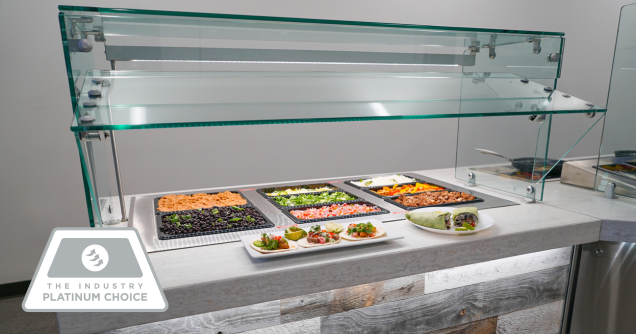
In a world marked by ongoing changes and disruptions, adaptability has emerged as a critical factor for success in the foodservice industry. Whether driven by external factors such as natural disasters, economic shifts or evolving customer preferences, the need for flexibility in foodservice design and operation has never been more evident.
Let’s explore the importance of equipment flexibility as a strategic approach to meet the ever-changing demands of the foodservice industry.
Prioritizing operational agility
Traditional foodservice operations often feature equipment designed for specific menu items or serving scenarios. However, in today’s rapidly changing landscape, such rigid setups can become unwieldy or even unusable when circumstances shift. To thrive in this environment, it’s essential to make adaptability a central consideration in kitchen design.
One effective strategy is to select equipment that can flex as needed. For instance, rotating stations with supporting prep and hold areas offer the flexibility to accommodate a changing menu. By planning for adaptability from the outset, you can prevent menu fatigue and seamlessly adjust to evolving customer preferences.
LTI’s Platinum choice QuickSwitch serving technologies are prime examples of equipment that supports flexibility, offering operators the ability to serve food hot, cold or frozen foods side-by-side in independently controlled wells.
Consequently, you can serve hot soup next to cold sandwiches without compromising quality. With the ability to change temperature settings in just an hour, you can easily convert a prepared hot food serving counter into one for cold packaged foods with the flip of a switch.
The versatility of multi-functional equipment
Multi-purpose equipment is a valuable asset for foodservice operators seeking to adapt to changing demands. The past few years have witnessed a surge in the availability of versatile cooking appliances like combi-ovens, as well as flexible serving solutions that cater to evolving needs, both front- and back-of-house.
For example, the rise in delivery and takeout orders has prompted many restaurants to pivot their operations. LTI’s QuickSwitch order assembly table serves as a dedicated station for preparing and packaging to-go orders. This self-contained unit with adaptable wells and convenient shelves ensures a seamless process without disrupting the main service line. If off-premises demand fluctuates, the table can be easily repurposed to support regular service.
Additionally, portable and convenient solutions like convertible serving counters offer operators the flexibility to bring food to diners. In corporate settings, these counters can function as grab-and-go options to discourage crowding in cafeterias or break rooms. At other times, they can serve as dining outposts or be used to deliver packaged or catered food to meeting rooms, enhancing accessibility and convenience.
From full-service to self-serve: a seamless transition
Recent events have highlighted the need for rapid adjustments in serving standards. Shared utensils and self-serve scenarios were temporarily suspended in many facilities due to safety concerns. Traditional serving counters, with their stationary food shields and customer-centric designs, often required retrofitting, sometimes through makeshift solutions.
To facilitate quick modifications, operators should consider food shields that can transition from self-serve to full-serve configurations. Having covers and small tools readily available can also make it easy to repurpose existing equipment for displaying and serving packaged foods, minimizing contact between diners and workers.
In a constantly changing dining landscape, adaptability and flexibility are invaluable assets. While predicting the future remains a challenge, foodservice leaders can enhance their readiness for whatever comes next by embracing equipment flexibility at every turn. By selecting adaptable, multi-purpose, and changeable equipment, they can navigate the evolving demands of the industry with ease and efficiency.
By integrating LTI’s cutting-edge equipment into foodservice designs, you not only ensure operational flexibility but also elevate the overall dining experience for your clients and their customers. Whether it’s seamlessly switching from hot to cold offerings, providing multi-functional equipment or effortlessly adapting to new serving standards, LTI empowers foodservice establishments to thrive in today’s dynamic landscape.
Further details:
Learn more at lowtempind.com.
